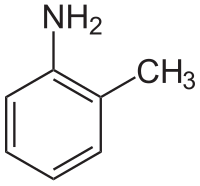
Photo from wikipedia
The “Multi-Threat Medical Countermeasure (MTMC)” strategy was proposed to develop a single drug with therapeutic efficacy against multiple pathologies or broad-spectrum protection against various toxins with common biochemical signals, molecular… Click to show full abstract
The “Multi-Threat Medical Countermeasure (MTMC)” strategy was proposed to develop a single drug with therapeutic efficacy against multiple pathologies or broad-spectrum protection against various toxins with common biochemical signals, molecular mediators, or cellular processes. This study demonstrated that cytotoxicity, expression of transient receptor potential cation channel subfamily A member 1 (TRPA1) mRNA, and intracellular calcium influx were increased in A549 cells exposed to amide herbicides (AHs), in which the order of cytotoxicity was metolachlor > acetochlor > propisochlor > alachlor > butachlor > propanil > pretilachlor, based on IC50 values of 430, 524, 564, 565, 619, 831, and 2333 μM, respectively. Inhibition/knockout of TRPA1 efficiently protected against cytotoxicity, decreased TRPA1 mRNA expression, and reduced calcium influx. The results suggested that the TRPA1 channel could be a key common target for AHs poisoning. The order of TRPA1 affinity for AHs was propanil > pretilachlor > metolachlor > (propiso/ala/aceto/butachlor), based on KD values of 16.2, 309, and 364 μM, respectively. The common molecular mechanisms of TRPA1-AHs interactions were clarified, including toxicity-effector groups (benzene ring, nitrogen/oxygen-containing functional groups, halogen) and residues involved in interactions (Lys787, Leu982). This work provides valuable information for the development of TRPA1 as a promising therapeutic target for broad-spectrum antitoxins.
Journal Title: International Journal of Environmental Research and Public Health
Year Published: 2022
Link to full text (if available)
Share on Social Media: Sign Up to like & get
recommendations!